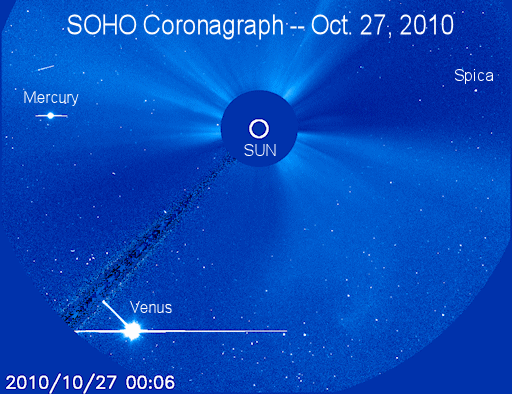E
EarthlingX
Guest
I prefer this :
sohodata.nascom.nasa.gov : SOHO Movie Theater
I can set range, resolution and do all sorts of things with animation. It is also much easier later, when the current gif is changed. Easy to get images for download also.
Saturn is that bright spot on the top, going from the middle to exit between 2010-09-17 and 2010-09-20 ? I think it came into view around 12th ?
CME on 13th, 14th, 15th ...
sohodata.nascom.nasa.gov : SOHO Movie Theater
I can set range, resolution and do all sorts of things with animation. It is also much easier later, when the current gif is changed. Easy to get images for download also.
Saturn is that bright spot on the top, going from the middle to exit between 2010-09-17 and 2010-09-20 ? I think it came into view around 12th ?
CME on 13th, 14th, 15th ...





